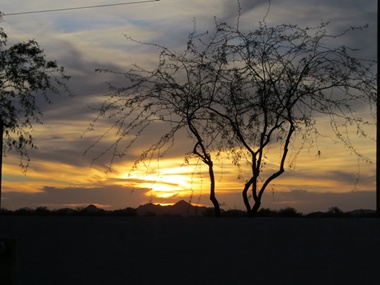
2016-03-04: Sunset
First stop was Tonopah, Arizona. Nothing really great about this place but we did have a beautiful sunset - what a great way to begin our trip.
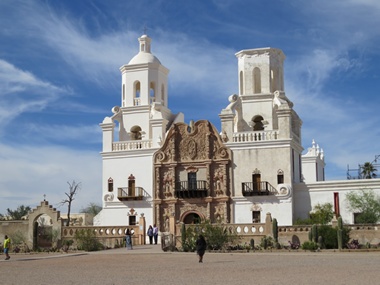
2016-03-05: San Xavier del Bac
San Xavier del Bac Mission in Tucson was founded in 1692 by Padre Eusebio Kino a pioneering Christian missionary and co-founder of the Society of Jesus (Jesuit) Order with Francis Xavier. In 1700 construction began on a church at a site nearby the current Mission. It served the community until it was razed by Apaches in 1770. This historic Spanish Catholic mission was built from 1783-1797 and is the oldest European structure in Arizona. It is widely considered to be the finest example of Spanish Colonial architecture in the United States.
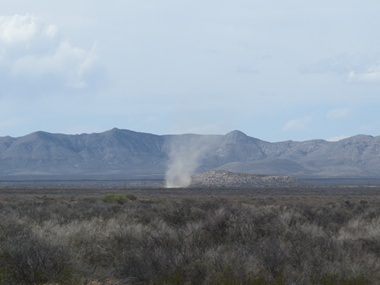
2016-03-06: Dust Devils
As we cross flat areas we're seeing lots of small and large dust devils. So far we've been lucky that we're viewing them from a distance and they're not crossing the highway because they can be very dangerous.

2016-03-08: Boquillas Canyon
Boquillas Canyon is the longest and deepest canyon in Big Bend National Park. The vertical depth from nearby Pico del Carmen, to river level is over 7,000 feet, somewhat deeper than the Grand Canyon of the Colorado.
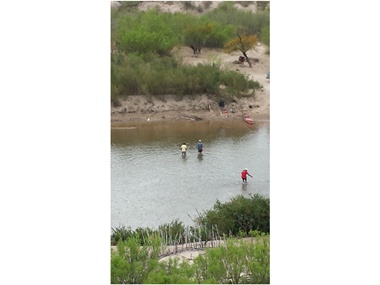
2016-03-08: Wading to Mexico
Here at Boquillas Canyon the Rio Grande River is about 30-feet wide across the river is Mexico and the small village of Boquillas del Carmen. On a rock at the overlook was a display of walking sticks and beaded items with a container for money. As I was looking at the stuff, three men appeared from the path from the river. It kind of startled me so I just walked away and continued taking pictures. Shortly after, we saw these same men wading across the river to return home. Evidently they make these trinkets and the park turns a blind eye to help keep the peace between the village and the park. One can also cross to Mexico via a ferry (a small row boat that costs $5.00 per person each way) and then get into town via taxi (a burro for $5 or a truck for $10 each way).

2016-03-09: Dugout Wells
This windmill uses the restless desert winds to siphon water from the lowlands, creating a shady oasis amid cactus and sand. The trees and foliage that drink from the well attract several varieties of birds, especially white-winged doves.
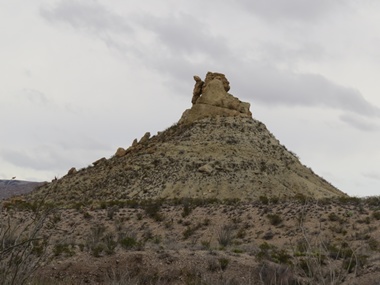
2016-03-09: Lizard Mountain
As the road curved around this rock formation we both commented on how it looked like a lizard was climbing it.
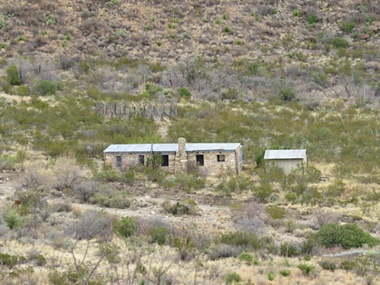
2016-03-09: Homer Wilson Ranch
The Homer Wilson Ranch, also known as the Blue Creek Ranch, was one of the largest ranches in the early twentieth century in what would become Big Bend National Park. The ranch was established by Homer Wilson in 1929 and was abandoned in 1945. The buildings made good use of available building materials that have withstood time allowing us to envision what typical ranch looked like at that time. Wilson had a herd of 4,000 sheep and 2500 goats that escaped the summer heat and found grassland on the slopes up-canyon.

2016-03-09: Chisos Mountains
Chisos Mountains are the volcanic center of Big Bend. The mountain mass rising out of the desert was once molten rock. This is a good example of a jumble of eruptions and underground flows. Rounded features were once subterranean domes of magma that became prominent as erosion scraped away thousands of feet of overlying sedimentary layers.
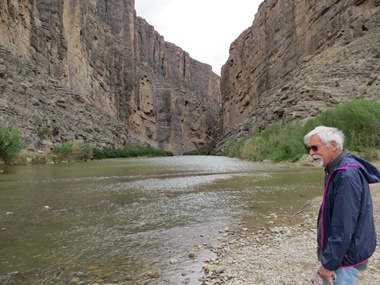
2016-03-09: Santa Elena Canyon
Except during flood season, the quiet waters of the Rio Grande do not seem powerful enough to have carved Santa Elena Canyon. Like liquid sandpaper, the current has filed away at Santa Elena's limestone walls and cut it deeper and deeper. This beautiful canyon is 8-miles long and 1,500 feet deep and in my estimation, the gem of Big Bend National Park.
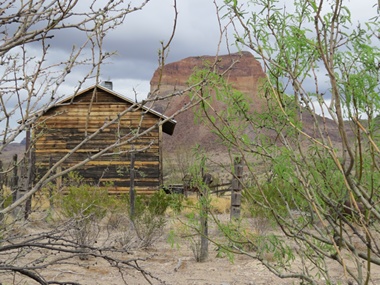
2016-03-09: Beauty Abounds
Around every bend one has the opportunity another beautiful rock formation or something of historical significance.
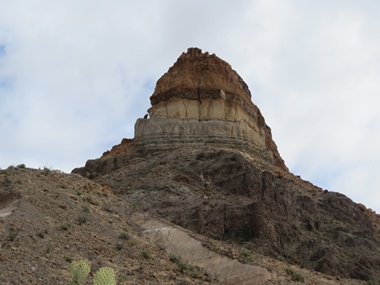
2016-03-09: Cerro Castellan
The layers visible in Cerro Castellan, a prominent, isolated butte that dominate the southwest corner of Beg Bend, reveals millions of years of volcanic events. Stacked in this tower are several lava flows and volcanic tuffs or ash deposits, with layers of clay and gravel from periods of erosion between eruptions. The cap rock of this formation is the same lava that formed Chisos' South Rim. It is an imposing and impressive sight with its sheer cliffs guarding all sides of the peak.

2016-03-09: Ash
Although this ash looks like sand dunes, it is now solid rock!
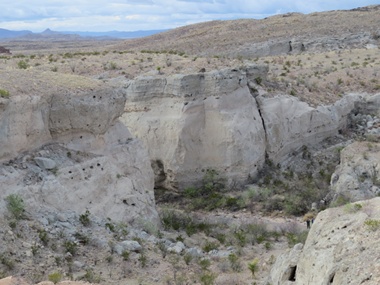
2016-03-09: Tuff Canyon
Tuff Canyon is a dry wash but is much deeper then other dry washes in the park. It is another example of volcanic tuff or ash.
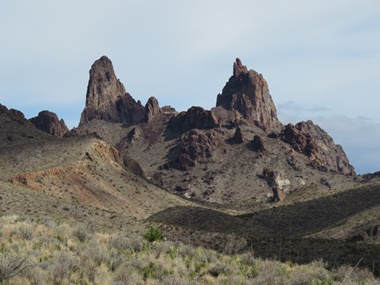
2016-03-09: Mule Ears Peaks
Mule Ears peaks are dikes that were once enclosed in volcanic ash or tuff. The amount of erosion that had to take place to expose these igneous peaks is amazing.
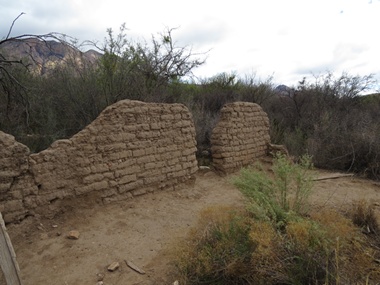
2016-03-09: Sam Nail Ranch
Here in this isolated area, Sam Nail and his wife established a ranch and settled. There are some adobe structures still standing as well two windmills (one still pumping water and the other in disrepair) and some non-native trees (a pecan and some plum trees). Definitely a trip back in time.
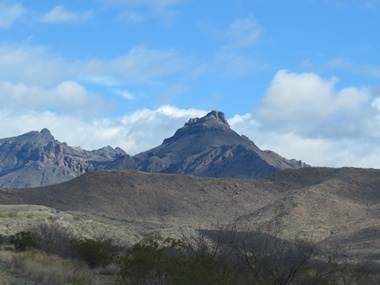
2016-03-09: Beautiful Vista
Another beautiful vista here at Beg Bend!
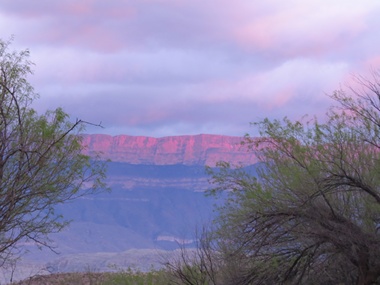
2016-03-09: Sunlit Mountains
Although most of the day cloudy, the sun peeked out just as it was setting and lit the mountains surrounding the campground.

2016-03-10: Off-roading
We set off today to explore an old hot springs resort reached by dirt road.

2016-03-10: Hot Springs Hotel
Hot Springs, also known as Boquillas Hot Springs, is a former resort developed by J.O. Langford, a Mississippi native, who had contracted malaria as a child and was searching for a cure. Langford made a homestead claim, sight unseen. The structures were built of local stone with wood trussed roofs covered with corrugated metal. Interior walls were plastered. Four of the motor court rooms featured painted murals. A terrace was covered with a long porch or ramada connecting the cabins. The resort was the first major tourist attraction in the area, predating the establishment of the national park.